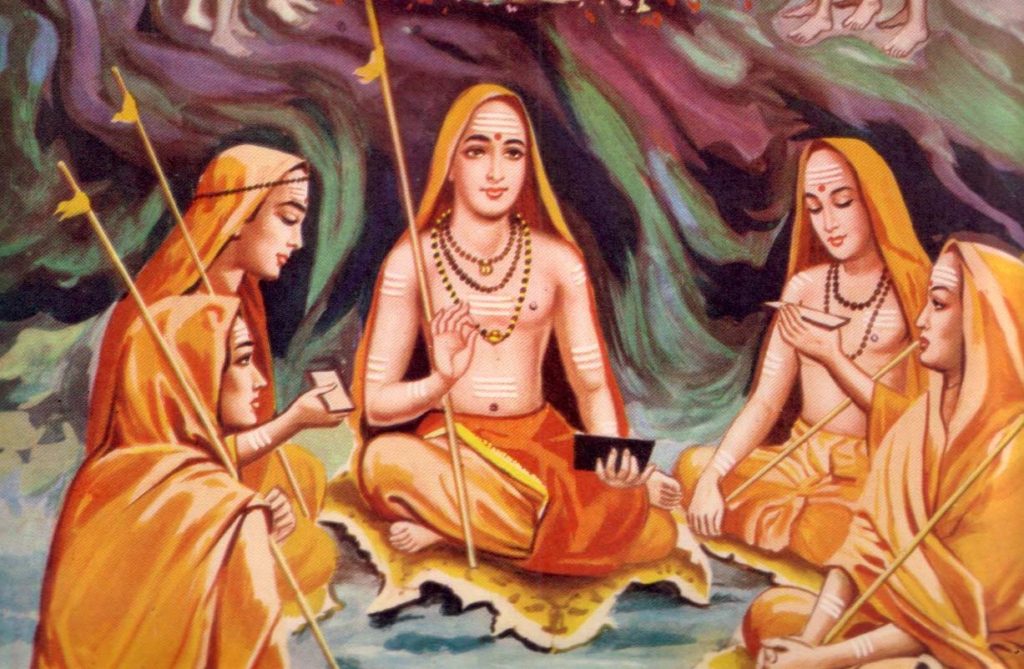Aristotle once said, “The whole is greater than the sum of its parts.” I was wondering if instead of creating “One Nation: One market”, should we not look at “All producers on One Portal” APOP, post Covid 19?
This Covid has pushed the markets into great turmoil and uncertainty and is fraught with risks. Markets run the economy upfront. If we want to see a turn around in the second half, not only markets but their supply chains too need innovative strategies. As we see a slow lifting of lockdown and expect a return to normalcy soon, the risk of bankruptcies, defaults, and long-term unemployment would be very high with growth slow and staggered.
The best way to avoid uncertainty is to build predictability! Rather than feeling lost in a blind alley, and wondering whether or not there is a large black cat, hiding somewhere that might pounce, there is a way to build predictability.
Economy is based on domestic products with imports used to fulfill any shortfalls. Which of the two, production or consumption, drives economy? How can one buy that is not produced at all? The problem is, until one consumes what is produced, there cannot be a stimulation of economy, since the production continues to be the black ball if not hole up in the sky. However, consumption is the true driver of economy. It serves no one’s interest to keep the warehouses and ships full. Last year, we produced 275 million tonnes of food grains or 25% of global production andconsumed 27% of what the world does.
Demand and Consumption determine prices. In contrast the farmer is rendered hapless when growing potatoes, onions or vegetables and not knowing how many more are growing them leading to a glut in the market amidst crashing prices even as the Govt stands mute witness to dumping them on highways in the absence of adequate support prices.
Potatoes, onions or vegetable farming in India is mostly for the fresh market. If they do not sell, then they rot. Potatoes need 6 hours sunlight and the country has 300 days of it in most of the places. Onions practically grow in any soil. They both have a lucrative post-harvest process market. APOP must provide technology support to them as much as encouraging vegetable processing like canning, freezing, dehydration, and pickling, and obtain seeds for planting. APOP can even promote home gardening, market gardening, truck farming, and vegetable forcing. Cabbage, lettuce, spinach, carrot, onion, pea, radish, pepper and tomato can all be cultivated as home garden crops. Whereas market gardening produces variety of vegetables for local markets, truck gardens produce specific vegetables for distant markets in relatively large quantities. With vegetable forcing, one can get vegetables in all seasons by inducing favorable conditions like Greenhouses. Apart from a business opportunity, they will even build the health narrative.
Limited point being that while the consumption statistics and even import statistics may be available, there are no estimates of production of crops other than the major ones. The answer is locked in Adhaar. It this not the most magnificent idea of a plotted India? It alone can predict production and even pricing. This is also where the farmer bills passed recently can make a profound change in farmers lives.
As a first, if each producer with Adhaar as the ID and Postal code as the geographical location were to log in his or her land holding, production and consumption estimates for a long time in future, one could recreate a new “AMAZONish” possibility. It would lead to a proactive, robust, sturdy and tenacious supply chain in addition to identifying productive and even cultivable geographies. For the illiterate, the Patwari or the revenue official could assist. The government could then augment its storage facilities with such data and share the same with free markets further encouraging buyers to reach farms directly using the data.
Next. There is need for a “Cost, Time and Motion effective” supply chain. Evaluation of need gaps to creating effective linkages in that CTM trilogy as the mantra to eradicate poverty, disease and hunger and improving markets through better production, education and health. APOP must become the substance.
How can we deliver potatoes grown in Uttar Pradesh to Tamil Nadu without adequate Reefer or refrigerated containers in place? Can our farmers predict a bumper or a whimper price for their produce when they do not even know the national level estimated production and have no visibility? This however, is something that only an APOP can plot.
Only an APOP can help make the supply chain better by letting producers of Uncle Chips know where to source their potatoes at Rs 4/- a kilo to package and sell at Rs 20/- for 50 grams or Rs 400/- per kilo. Only an APOP then will consequently inspire the farmer to demand a better price if the reefer stood at its boundary. Several aggrotech players are already using online marketplace for farmers, where they can sell their produce and get decent returns, even during this hour of crisis. There is need for a consolidated national portal. APOP is the answer.
Market intelligence is very important if agriculture is to become profitable. The APOP must allow growers to view requests on the portal from merchants and post available stocks of agricultural produce. One should be able to submit a location, variety, quality and information about how long the produce has been in store. Contacts are then generated from potential buyers. Merchants can view available stocks from growers and post requests for specific varieties and volumes of various agricultural produce.
This article attempts to bring under such a Sun “The APMC act” which was conceived with objectives like ensuring that farmers are not exploited by intermediaries. The purpose of APMC is noble. But has the farmer benefitted? In the current context, the farmer is a hapless beneficiary of the drought or the rain. India owes its gratitude to people who conceptualised the Adhaar and ensuring that each individual rural or urban understands its value. Adhaar can be the metaphorical and mythological Kamdhenu cow!
It’s just a case of APOP linked to “Adhaar” that to my mind, will cure what our earlier policies have failed to endure! More grass can be converted into cheese by bringing in a cow. That silver bullet has even greater power and potential to power the bullet train.
1,168 total views, 2 views today


